#Varsinais-Suomi
Text
Watch: Finland ushers in Christmas Peace to large crowds in Turku
Finland's timeless tradition of declaring Christmas Peace in Turku's Old Great Square continues, as it marks the official start of the holiday season.
#yle.fi#suomi#finland#Finland Proper#Varsinais-Suomi#Turku#Vanha Suurtori#Old Great Square (Turku)#Old Great Square#Christmas#Joulu#Joulurauha#Christmas Peace#Declaration#Declaration of Christmas Peace#Joulurauhan julistaminen#suomitumblr#suomitumppu#suomi tumblr#suomi tumppu
4 notes
·
View notes
Text
Historiallisten maakuntien alueet Suomessa (nykymaakuntien rajat keltaisella)
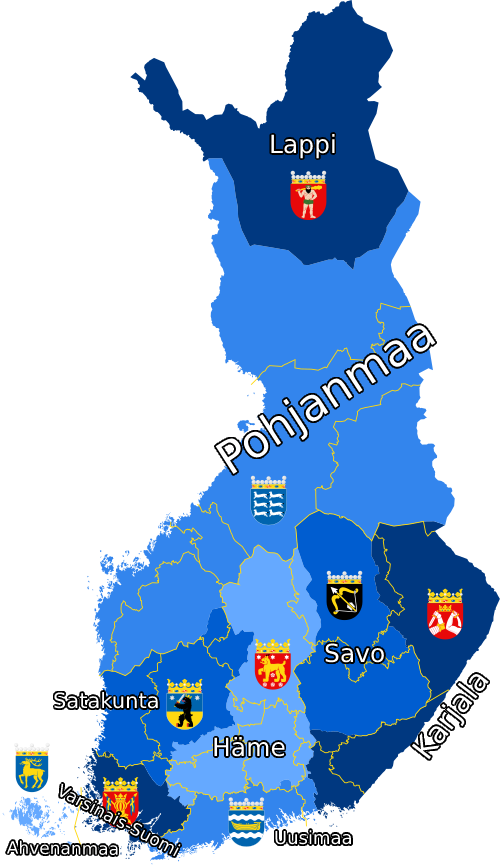
Nykymaakuntia on liian monta tätä kyselyä varten D:
297 notes
·
View notes
Photo
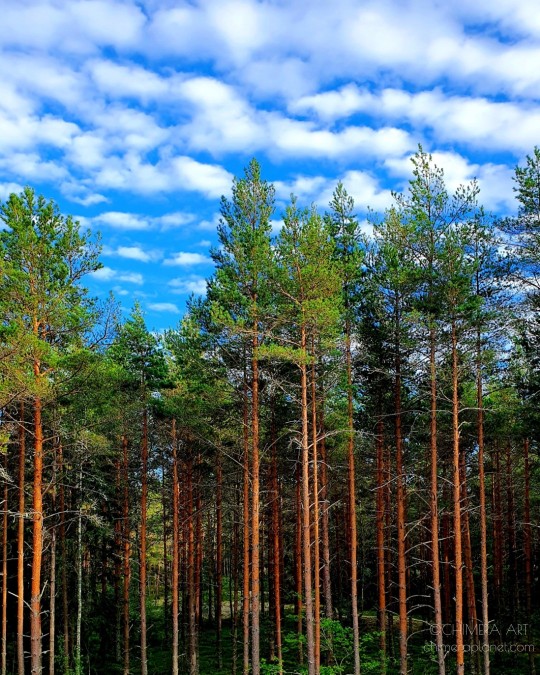
Beautiful sky. Peaceful view. Varsinais-Suomi, Finland. [OC] [2196 x 2747]
7 notes
·
View notes
Text
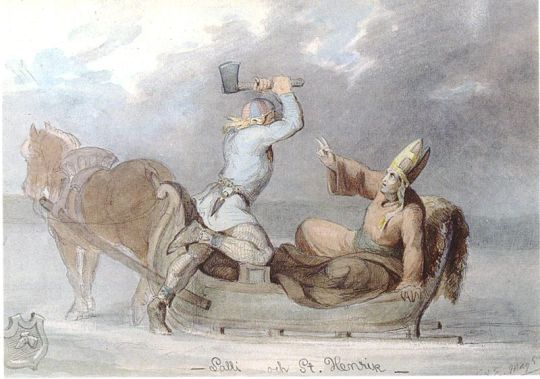
Hl. Heinrich (Henrik) von Uppsala
gefeiert am 19. Januar
Hl. Henrik
Glaubensbote in Finnland, Bischof von Uppsala (?), Märtyrer
* um 1110 in England (?)
† 1156 in Köyliö in Finnland
Henrik war wohl Engländer, der um 1152 mit einem päpstlichen Legaten - dem späteren Papst Hadrian IV. - nach Skandinavien geschickt wurde. Mancher Überlieferung nach als Bischof von Uppsala tätig, zog er 1155 mit dem Adligen und späteren König Erik auf einen Kreuzzug nach Finnland - wohl in den nördlichen Teil der Provinz Varsinais-Suomi, in den Ort Kalanti, oder in das bereits christlich beeinflusste Gebiet Ala-Satakunta mit den Gemeinden Kokemäki, Köyliö und Nousiainen. Das Unternehmen blieb ohne größeren Erfolg. Henrik blieb dann in Finnland, um das Christentum dort weiter zu verbreiten. Ein Bauer namens Lalli, den er wegen eines Mordes mit kirchlichen Strafen belegen wollte, erschlug ihn demnach auf dem Eis des Köyliösees mit einer Axt.
Henriks Verehrung war besonders im 13. Jahrhundert verbreitet, v. a. durch stark ausgeschmückte Legenden. Gebeine wurden zunächst nach Nousiainen und dann 1300 in den neu errichteten Dom in Turku gebracht. Die über ihn im 14. Jahrhundert gedichtete Hymne des Heiligen Henrik war die erste Nationalhymne des Landes. Henrik wurde in der Zeit vor und auch noch nach der Reformation in Finnland hoch verehrt als Nationalheiliger. Die einzige - angeblich - echte Reliquie wurde im Jahr 2000 im Hauptaltar der Bischofskirche St. Heinrik in Helsinki eingesetzt.
#saints#heiliger heinrich von uppsala#henrik#england#skandinavien#kreuzzüge#finnland#axt#christianity#religion#glaube#römisch katholische kirche#gott#christus#christ#jesus#betrachtung#christentum#heiliger des tages#glaubensbote#bischof#märtyerer
1 note
·
View note
Text
Myyjä, Sale Suomusjärvi
Job title: Myyjä, Sale Suomusjärvi
Company: S-Ryhmä
Job description: Primary location: SALO Oletko haaveillut työstä tunnelmallisessa kyläkaupassa? Tilaisuutesi on tässä! Myyjä, Sale Suomusjärvi Täällä maalaismaisemissa, Suomusjärven omassa kyläkaupassa olisi paikka uudelle osaajalle! Olemme juuri saan…
Expected salary:
Location: Suomusjärvi, Varsinais-Suomi
Job date: Sat, 17 Jun 2023 01:48:58…
View On WordPress
0 notes
Text
En 1550, le roi suédois Gustav Vasa fonde Helsinki

En 1556, Jean III accorde à la Finlande le statut de duché. Dans la première moitié du XVIIe siècle, le roi suédois Gustav II Adolf a conquis la Carélie. En 1640, une université est fondée à Turku.
Dans la période de 1700 à 1809, à la suite de trois armées russo-suédoises, la Finlande est devenue une partie de l'Empire russe sous le statut de Grand-Duché, avec Helsinki comme capitale. En 1917, la Finlande déclare son indépendance, qu'elle confirme lors de plusieurs guerres avec l'URSS. Jusqu'au début de la Seconde Guerre mondiale, le pays a maintenu sa neutralité. En 1940, il a commencé à coopérer avec l'Allemagne afin de restituer des terres historiques et d'étendre ses territoires. En 1944, la Finlande se retire de la guerre et rompt ses relations avec les fascistes. En 1995, l'État est devenu membre de l'Union européenne.
Le territoire de la Finlande est divisé en 19 provinces (régions), qui, à leur tour, sont divisées en villes et communes. Régions de Finlande : Lappi, North Pohianmaa, Kainuu, North Karelia, North Savo, South Savo, South Pohianmaa, Pohianmaa, Pirkanmaa, Satakunta, Central Pohianmaa, Central Finland, Varsinais-Suomi, South Karelia, Pääät -Hyame, Kanta-Hyame, Uusimaa, Kyumenlaakso, îles Åland.
#voyage#lesvues#pays#apprendlemonde#temps#bonjourvoyage#repos#joie#plaisir#environnementinconnu#faitsintéressants#finaguide
0 notes
Photo

Kustavi - Eva Cederström 1945,
Finnish,1909-1995
Oil, 60 x 72 cm.
48 notes
·
View notes
Text
Minä: Missä mun paketti on?
Posti:
Minä:
Posti:
Minä:
Posti: Liedossa
Minä: Vittu
7 notes
·
View notes
Text

Olen ehdolla Varsinais-Suomessa aluevaaleissa! Sote-uudistuksen toteuttamisesta ei ole tällä hetkellä paljoa tietoa eikä tulekaan olla. Varsinais-Suomen sote-palveluja järjestää uudestaan ensimmäinen hyvinvointialueen valtuusto. Uusi sote-järjestelmä kannattaa laatia seuraavasti:
Taaten tasavertaisia parannuksia kaikkiin Varsinais-Suomen kuntiin: EI VAIN TURKUUN!
Kuunnellen heitä, jotka osaavat hommansa, eli nykyisen henkilöstön palautteita ja toiveita
Lisäämällä vakituista henkilöstöä ja julkista omaisuutta
Näin houkutellaan Varsinais-Suomeen asiantuntevaa porukkaa ja taataan laadukkaita ja ennaltaehkäiseviä palveluja kaikille Varsinais-Suomalaisille.
Sano EI yksityistämiselle!
0 notes
Text
AAAAAAA REVONTULIAAAAA
2 notes
·
View notes
Link
#Yle.fi#Suomi#Finland#Southwest Finland#Finland Proper#Lounais-Suomi#Varsinais-Suomi#Turku#Åbo#Tongue-in-cheek#Translated#Neghborhoods#Geographic nomenclatures#English language#map#citymap#City map
0 notes
Photo

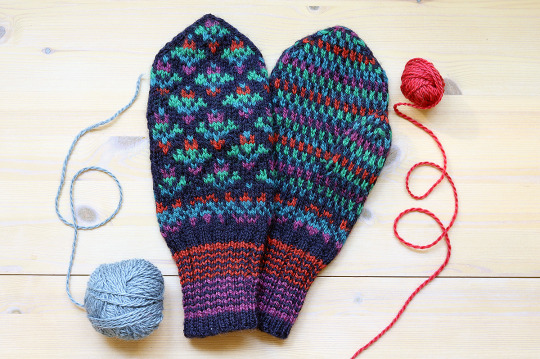
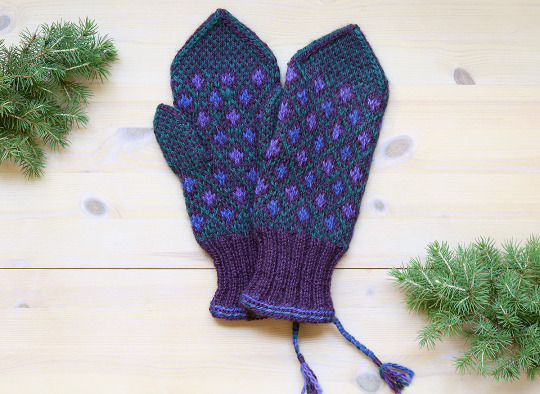



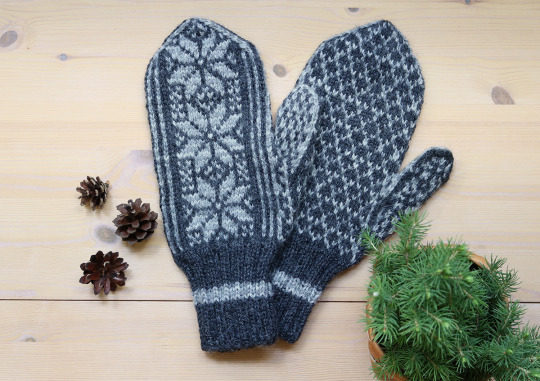

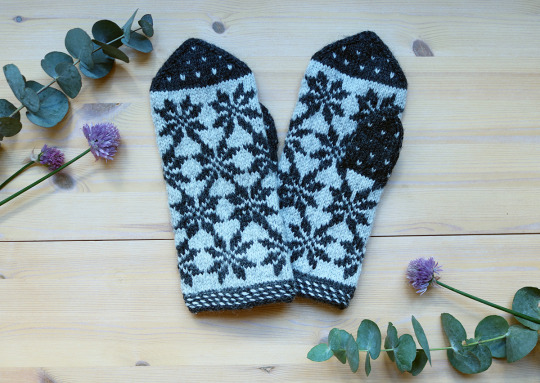

Maakuntalapasia. Traditional Finnish mittens. (x)
#lapaset#käsityöt#pohjanmaa#satakunta#varkaus#mikkeli#kainuu#helsinki#österbotten#kymenlaakso#Ostrobothnia#finland#suomi#finnish#knitting#patterns#knitting inspiration#folk crafts#kansanperinne#kansankulttuuri#folk patterns#folk art#traditional patterns
658 notes
·
View notes
Photo
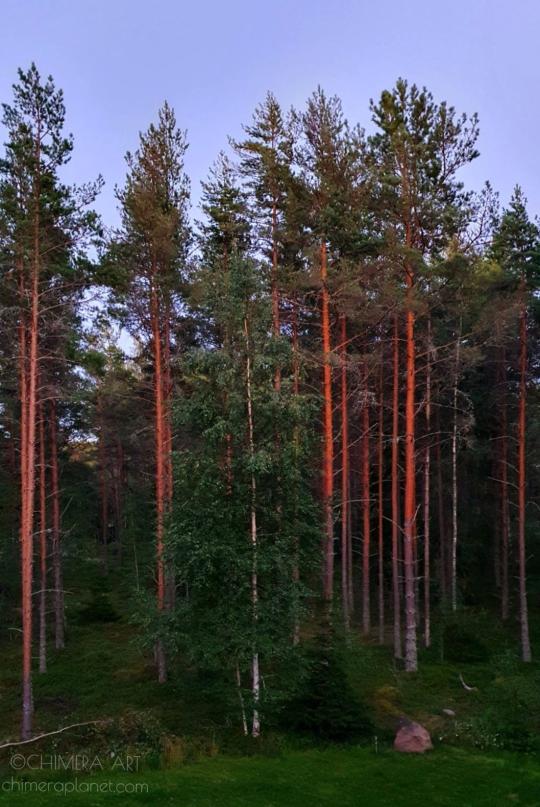
Our peaceful evening forest. Varsinais-Suomi, Finland [OC] [1058x1581]
1 note
·
View note
Text
Finnish regions and their capitals
Lappi (Lapland) - Rovaniemi
Pohjois-Pohjanmaa (North Ostrobothnia) - Oulu
Kainuu - Kajaani
Pohjois-Karjala (North Karelia) - Joensuu
Pohjois-Savo (Northern Savonia) - Kuopio
Etelä-Savo (Southern Savonia) - Mikkeli
Etelä-Pohjanmaa (South Ostrobothnia) - Seinäjoki
Keski-Pohjanmaa (Central Ostrobothnia) - Kokkola
Pohjanmaa (Ostrobothnia) - Vaasa
Pirkanmaa - Tampere
Keski-Suomi (Central Finland) - Jyväskylä
Satakunta - Pori
Varsinais-Suomi (Southwest Finland) - Turku
Etelä-Karjala (South Karelia) - Lappeenranta
Päijät-Häme (Päijänne Tavastia) - Lahti
Kanta-Häme (Tavastia Proper) - Hämeenlinna
Uusimaa - Helsinki
Kymenlaakso - Kouvola
Ahvenanmaa (Åland) - Mariehamn
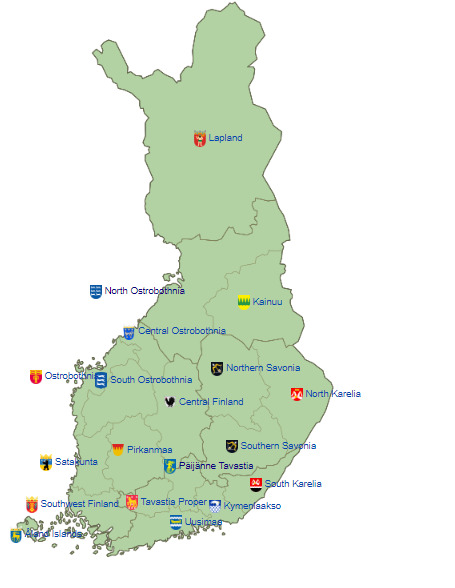
Source: Wikipedia
108 notes
·
View notes
Text
Director Contract Management and Commissioning, Cargo Stowage Solutions
Job title: Director Contract Management and Commissioning, Cargo Stowage Solutions
Company:
Job description: Collaborate with sales and marketing, finance, engineering, sourcing & supply chain, QEHS and research & development teams…
Expected salary:
Location: Kaarina, Varsinais-Suomi
Job date: Sat, 17 Jun 2023 02:45:30 GMT
Apply for the job now!
View On WordPress
0 notes
Text
It's sometime in the 1200’s. Men have come from the west, and they speak the language some - not you necessarily, but some -of the people on this small strip of sparsely populated land recognize, even if they don’t understand it. You’ve traded with the western men before, been attacked by them as well, just like a while ago, when they came. You and your people struck back, but nonetheless. Someone tells you that you must pay taxes now. You have a king now. You are handed a cross. You have a king now. A Swedish king.
It’s 1809. You are in Porvoo. The war is still ongoing, but yet, here you are, to swear an oath to your new king. No, this is no king, this man is an emperor. Alexander the First. He promises you that you can keep your religion, your old Swedish laws and your rights. The estates swear their oaths of allegiance. At the end of the ceremony, the tsar tells you that you and your people have now been heightened to a nation among nations. You are not sure what that means - there is no nation, no country, just nine provinces, the Åland islands and some land from the north, where Tornio- river marks the border between two countries - the one you belonged to yesterday and the one you’ll belong to from this day on.
Next autumn, the Treaty of Fredrikshamn is signed by the representatives of both, the Kingdom of Sweden and the Russian Empire. Sweden gave up the nine läns, the islands and the strip of land from the north forever, and they would be forever a part of Russia.
You wonder what you should do. Russians have given the citizens three years to decide where they wish to live; Sweden or Russia. You don’t particularly like either option, but there is no third option. There is no land between east and west.
It’s 1899. The tsar, Nicholas the Second, did not agree to meet with the men bringing him the Great Petition to end the February manifesto. The Grand Duchy of Finland does not have its own postal service anymore. The diet can no longer decide the laws; Russians decide them now. You don’t understand how the emperor could do this to his loyal citizens. They’re telling rumours that there are people in Russia who want to take the autonomy away once and for all. You hope those are only rumors.
It’s 1917. Everything is chaos.The Great War is raging. There was a second revolution in Russia; the bolsheviks have the power now. You are at a loss of what to do. The Finnish Parliament declares that it now holds the greatest legislative power in the Grand Duchy. The working class and the middle class are not getting along, haven’t been since the years of oppression. Everything is changing - you can feel it.
It’s 6th of December, 1917. The Parliament has just approved the declaration of independence made only two days earlier. Now, for the first time ever, you all have to stand on your own two feet - there is no motherland to take care of you if you mess up. You wonder if you’ll survive a decade here, in this sparsely populated land between east and west. You swear to do everything it takes.
It’s 2017. Some teenage girl is writing this pretentious text at 3:15 AM in November. In the independent Republic of Finland.

Finland’s 100 years of Independence
6.12.1917-6.12.2017
Finland is both very old and very young. The ancestors of the people living in Finland today - and of the Sami people especially - are among the first humans to have settled down in Europe, and the bedrock on which Finland rests is among the oldest in the world. However, the Finnish written language was developed only in the 1500’s by Mikael Agricola and the first books written in Finnish were published in 1870. In the 1700’s, the concept of “Finnish” being separate from “Swedish” regarding the language and some cultural aspects was born, but really being Finnish like we are Finnish today wasn’t born until the latter half of the 19th century.
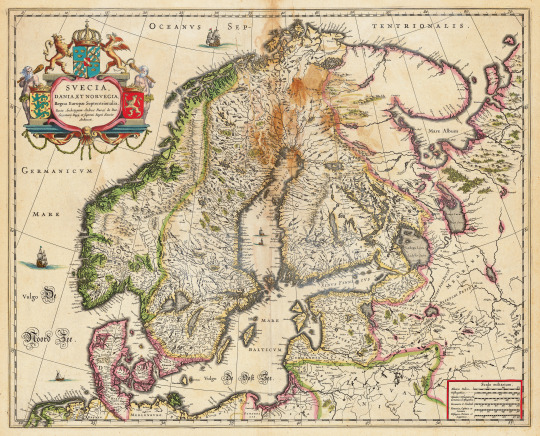
Parts of the area known as Finland today were annexed by the Kingdom of Sweden at different times. Some areas of Finland were a part of Sweden for around 600 years, some less than 60. As a part of Sweden Finland wasn’t really… Finland. It consisted of the provinces, or läns, though one of them was called Varsinais-Suomi, Proper Finland, or Egentliga Finland in Swedish. Only in 1809, when Sweden lost the Finnish War to the Russian Empire and gave up its eastern areas, did Aleksanteri I, Alexander I, unify the läns under the name “Suomen suurruhtinaskunta”, “the Grand Duchy of Finland” and make the Grand Duchy an autonomous region within the empire.

As a part of Russia Finland was doing quite well, better than as a part of Sweden. It’s impossible to say if Finland would’ve been better off as a part of Sweden all along, but it can be said with certainty that as a part of Sweden Finland most likely wouldn’t have become an independent country. The Diet of Finland wasn’t called until 1863 even though Alexander promised to do so in like 1812, but Finnish people either didn’t mind or didn’t care. Finland was also one of the most peaceful parts of the Russian Empire; the Finnish people were either very loyal to the czar OR, again, they didn’t really care. Nonetheless, Finland gained its own postal service, currency and eventually the Diet was called as well. The Finnish language was to become equal to Swedish in 20 years, and the national awakening was bringing with it the Golden Age of Finnish Art.

A product of the Golden Age, Raatajat rahanalaiset (Kaski) (1893) by Eero Järnefelt, English translation being “Under the Yoke (Burning the Brushwood) ; Wage Slaves / Burn-Beating”.
In 1899, just as Finland had started to embrace its Finnishness, the Russification of Finland, known in Finland as Sortokaudet, the Years of Oppression, began with the February Manifesto by Nikolai II, Nicholas II. The postal service had been shut down earlier, but now all the power from the Finnish politicians in the Diet was given over to the Russians. The use of Finnish was no longer encouraged, now everyone was forced to learn Russian. Finnish people tried to appeal to the czar, students collecting half a million names (about ¼ of the population) into the Suuri adressi, the Great Petition, by skiing from village to village, only for the czar to decline the delegation. Finnish politicians started to be replaced by Russians. Finland was slowly losing its autonomy.
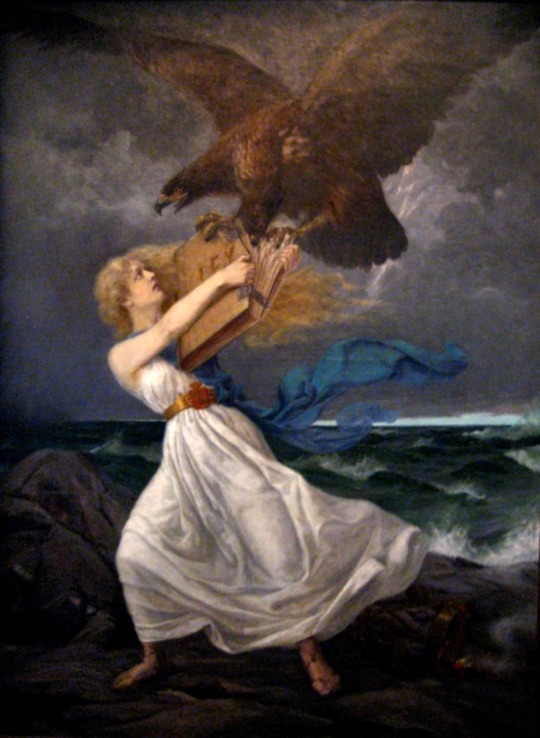
A famous painting, Hyökkäys (1899) by Edvard Isto. The name of the painting means “An attack”. It depicts the Russian double-headed eagle trying to rip the lawbook from the hands of the Finnish Maiden, the national personification of Finland. It became a symbol of the resistance towards the Russification of Finland.
In 1905 the revolution ended the Russification, and the Finnish Parliament was formed - it has barely changed since, by the way. With this reform of the Finnish political system, Finland also became the 2nd country in the world to give women the right to vote, and the first country in the world to give everyone, regardless of gender, equal political rights. The first women in the world elected as Members of Parliament were Finnish. After this brief period of time Russification was put into action again. It was only ended by the October Revolution in 1917. Which brings us to our next topic...
End of the Year 1917
In 1917 the two Russian revolutions took place, at the beginning and at the end of the year.This unrest made the working class and middle class, who were not on very good terms with each other otherwise, to agree on one thing: They wanted independence.
On November 15th the Finnish Parliament declared itself to hold the highest legislative power in Finland.

A newspaper article from Viipurin Sanomat from 10.11.1917, telling about the decision the Parliament made to transfer the power (in Finland) that earlier was held by the czar to 3 people chosen by the Parliament.

The suggestion, voting and the final result of the plenary session where the Parliament ended up deciding to ditch their previous idea of electing those 3 people and just having the legislative power to itself.
On 4th of December the government - or P.E. Svinhufvud’s Independence Senate (P.E. Svinhufvudin itsenäisyyssenaatti) - gave the Declaration of Independence.

A picture of Svinhufvud’s Senate and the original Finnish Declaration of Independence. A link to the English translation of the text.
On the 5th, the Declaration was published for all the people of Finland to see - however, the rising tensions between the working class and the middle class, as well as the famine closing in kind of distracted the people.
On December 6th the Parliament voted in favor of Independence. The votes were 100-88, those 88 being the Social Democrats who’d wanted to negotiate with the bolsheviks before independence. This day was chosen as the national day of Finland, the Finnish Independence Day. However, on 6th of December in the year 1917, the newly gained independence did not stir much positive emotions. According to the memoirs of a Finnish author, Lauri Arra, that year, “everyone waited for or sensed that some terrible disaster was going to happen”. This terrible disaster was waiting for the newly born nation in the January of 1918, only a few weeks later.
To be a real country, other countries must recognize the independence first. Right away Finland asked Sweden, Denmark, Germany, France, Norway and Great Britain to recognize the new country’s independence. You might have noticed that a key player in this becoming-a-country-independent-from-Russia-and-asking-others-to-recognize-our-breaking-away-from-Russia-process is missing: Russia.
No, Finland did not ask Russia to recognize our independence at first. However, all the other countries refused to recognize Finland as independent before the country Finland was trying to break free from approved of said breaking free first, and so Finland had to turn eastward with an apologetic smile and go: “...Please?” I mean, I assume that’s how it went, I dunno, I wasn’t there.
The first ones to make a move were the Social Democrats: they asked their eastern comrades to recognize Finland as a proper nation. Lenin agreed to do so if someone came and asked. On 29th of December Svinhufvud himself, with the other negotiators, traveled to St. Petersburg. The Finnish delegation was forced to wait for hours in some room outside the room where all the important stuff was happening.
Then, just before midnight, literally minutes before the year 1917 came to a close, the Finns were handed a note, a piece of paper, with which Soviet Russia recognized Finland as an independent nation.
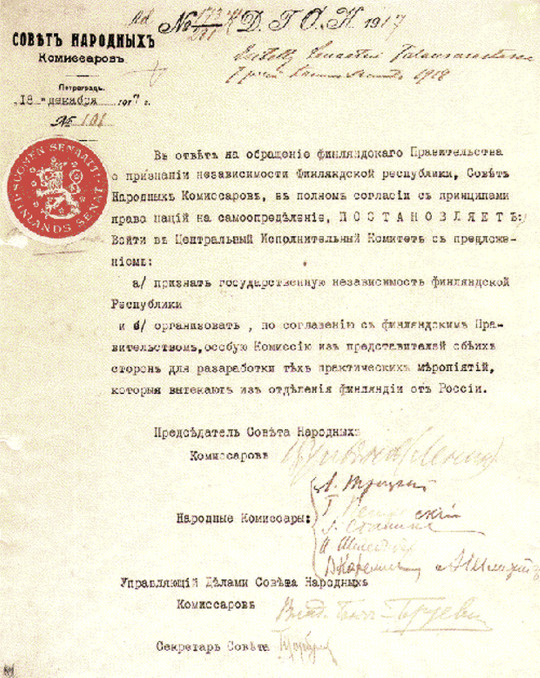
Said piece of paper.
Recognition
Soviet Russia was the first country to recognize Finland’s independence on December 31st, 1917. The confirmation for the recognition was given on January 4th, 1918. The next countries to recognize Finland as a country were France, Sweden and Germany, on January 4th as well. Other countries followed, even though countries like USA and Great Britain recognized Finland only after WWI, to make sure Finland wouldn’t go and join the bad guy Germany, so to say. (Krhm.)
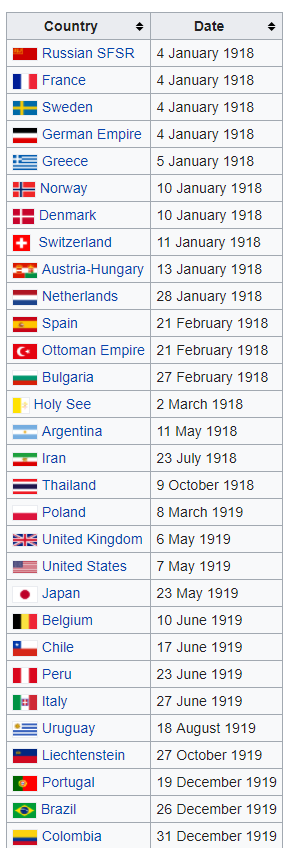
A screencap of the Wikipedia article on the Finnish Declaration of Independence because it had the handy list here. On top of these countries, Romania, Venezuela, Panama, Ecuador, Mexico and Hungary recognized Finland in 1920. Paraguay and Luxembourg followed in 1921, Serbia in 1922, and finally Afghanistan and Albania in 1928.
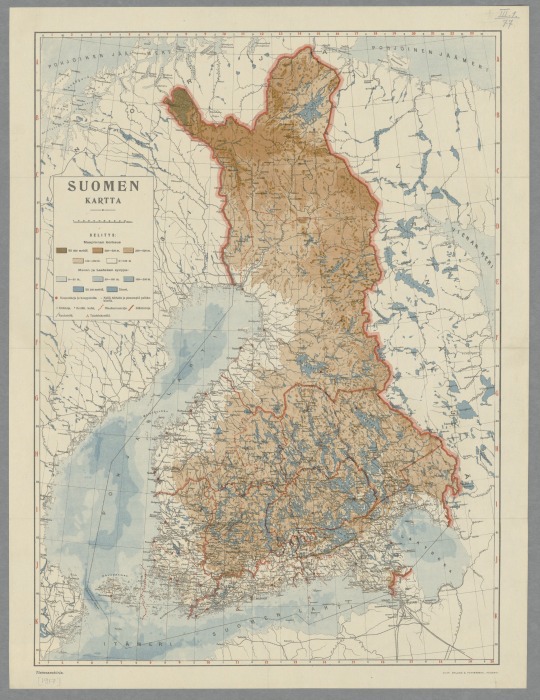
Map of Finland in 1917.
Here’s the end of part 1 of the Finnish Independence post. This focused on the history, but the next part, which I will hopefully publish soon, will focus on how we celebrate our independence. I hope you enjoyed.
Hyvää itsenäisyyspäivää!
#hetaliafandomdirectory#suomi100#finland#aph finland#finland's independence day#hetalia#hey it's sort of in time!!#i underestimated my need of sleep#so this is like 6 hours late#i apologize deeply#I hope you like it!!'#i'm pretty sure these are old enough to be in public domain#enjoy!!!!
2K notes
·
View notes